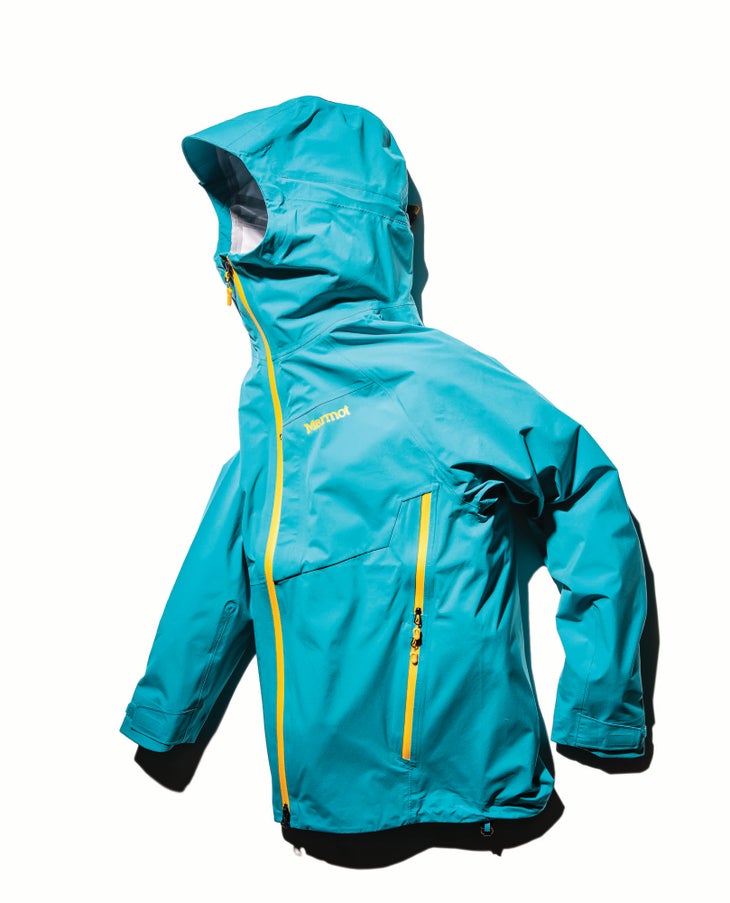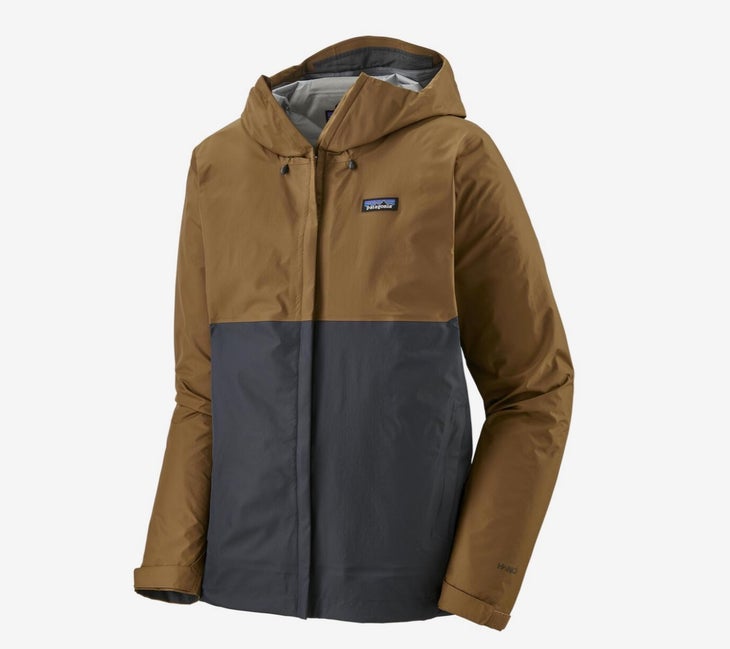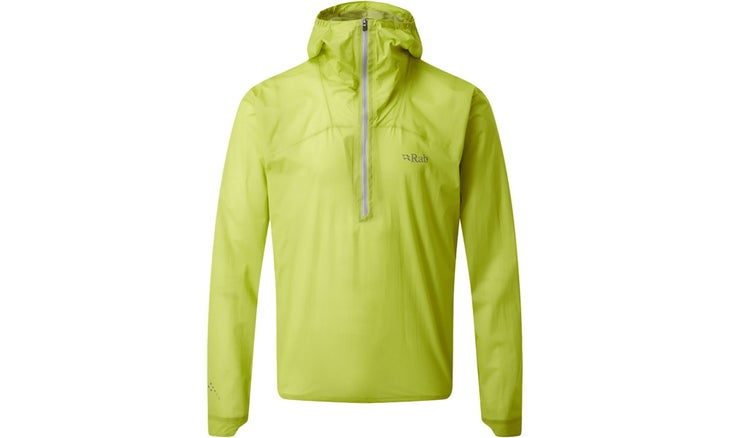Heading out the door? Read this article on the new Outside+ app available now on iOS devices for members! Download the app.
Hardshell jackets are one of the products we receive the most questions about: How do they work? What’s the standout technology in the category? Why are some shells more breathable than others? What the heck is 3-layer construction? Keep reading for all the info you need on the gear that will keep you dry when the weather turns.
How do waterproof/breathable membranes work?
Waterproof/breathable membranes are called as such for a reason: They don’t just keep precip out, but also allow your sweat to evaporate from your body as well. (A plastic poncho, on the other hand, will only do the former, so you’ll swamp out quickly.) This is because the microscopic pores of the membrane are small enough that they don’t let water droplets through, yet large enough to let sweat vapor out.
How does one type of membrane differ from another?
It’s all in the design. The standard method for creating a waterproof/breathable membrane is using expanded polytetrafluoroethylene (ePTFE), a type of polyurethane (PU). ePTFE was popularized by Gore-Tex about 50 years ago, and the company—along with many other competitors—still uses it today. While ePTFE and PU membranes can be exceptionally breathable, they’re not air-permeable; that is, a certain amount of sweat vapor has to build up on the skin side of the membrane to create sufficient pressure to push the vapor through to the outside. Electrospun membranes, on the other hand (such as Outdoor Research’s AscentShell or The North Face’s FUTURELIGHT) use a different construction process that makes them air-permeable. As soon as you begin to sweat, the moisture is released away from your body. Membranes created by eVent and some from Pertex are also air-permeable.
So, air-permeable membranes are always the way to go?
Not quite. The other major factor in how a waterproof/breathable membrane performs is what it’s attached to. With a couple notable exceptions, membranes are bonded to a face fabric (the outer part of the shell) that can vary in density and thickness, and protects the membrane from harm. The more robust this fabric is—higher-denier materials are generally more durable than lower-denier ones—the more the membrane beneath it is handicapped in terms of releasing sweat vapor.
Then, there’s what’s beneath the membrane. You’ve probably noticed that shells come in 2-, 2.5-, and 3-layer constructions. These numbers refer to the layer that’s on the inside of the shell. In a 2-layer waterproof/breathable shell, the membrane is lined with a second material—usually mesh, and sometimes nylon. It helps protect the membrane from body oils and other wear and tear, but is not bonded to the membrane itself. A 3-layer shell’s lining is bonded to the membrane, which aids in the moisture-moving process: The lining will absorb sweat vapor and move it up through the membrane, which is why 3-layer shells are more breathable (while usually slightly heavier and more expensive). Finally, a 2.5-layer shell splits the difference between the two with an ultrathin inner lining that, while bonded to the membrane, is not as effective as a 3-layer design.
In recent years companies have also introduced shells that have the waterproof/breathable membrane outside, with no face fabric covering it. These technologies—like Columbia’s OutDry or Gore-Tex’s Shakedry—are extremely breathable, but suffer a durability penalty due to the lack of protection from a face fabric.
That’s a lot of info to take in.
Right? Just keep in mind that all the options above will keep you protected from rain and snow. As long as you remember to factor in the other pieces of the puzzle—the fabric and weight of the jacket itself, and the type of its layered construction—you should be able to pick the right shell for your adventures. To start, here are some examples of shells the BACKPACKER team has enjoyed and reviewed recently.
Marmot Keele Peak

With an air-permeable Pertex membrane, this jacket and its high breathability factor is our pick for winter activities in warmer conditions or when you’re working hard going uphill. Read the full review
Patagonia Torrentshell

A classic 3-layer construction means this shell is both reliably waterproof and adequately breathable, if on the heavy side. Because Patagonia uses its own membrane, rather than one from Gore-Tex or another company it’s a more affordable option. Read the full review
Rab Phantom Pull-On

This Editors’ Choice-winning shell uses a 2.5-layer design that makes it more breathable than its minimal weight would suggest. Read the full review
